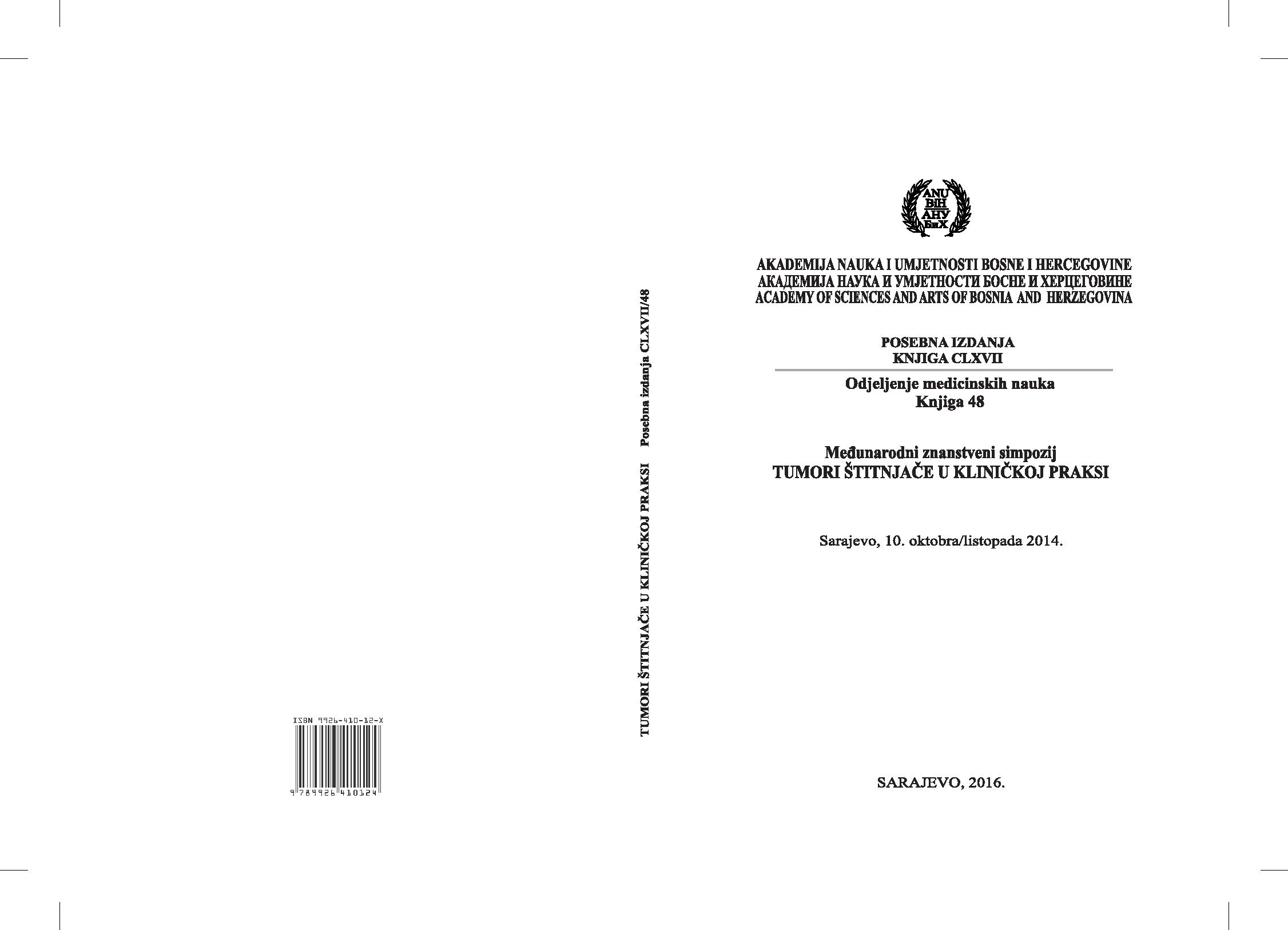RADIOIODINE THERAPY OF DIFFERENTIATED THYROID CANCER – PRINCIPLES AND PRACTICE
RADIOIODINE THERAPY OF DIFFERENTIATED THYROID CANCER – PRINCIPLES AND PRACTICE
Author(s): Amela Begić, Elma Kučukalić - SelimovićSubject(s): Health and medicine and law
Published by: Akademija Nauka i Umjetnosti Bosne i Hercegovine
Keywords: thyroid cancer; radioiodine therapy I-131; follow-up;
Summary/Abstract: Differentiated thyroid cancer is defined as a carcinoma deriving from the follicular epithelium and retaining basic biological characteristics of healthy thyroid tissue. Differentiated thyroid carcinoma is an uncommon disease clinically, but worldwide, its incidence shows a noticeable increase. When appropriate treatment is given, the prognosis of the disease is generally excellent. Although the 10-year survival rate in cases of distant metastasis is approximately 25-40%, the 10-year overall cause-specific survival for differentiated thyroid carcinoma patients as a whole is estimated at approximately 85%. Radioiodine therapy is defined as the systemic administration of iodine I-131 for selective irradiation of thyroid remnants, microscopic differentiated thyroid carcinoma or other nonnresectable differentiated thyroid carcinoma or both purposes. The first form, radioiodine ablation, is a post-surgical adjuvant modality. Ablation also allows sensitive “post-therapy” whole- body scintigraphy that may detect previously occult metastases and serves to treat any microscopic tumour deposits. Ablation success is evaluated 6-12 months after the ablation procedure. Conclusion: Lifelong follow-up is needed in all differentiated thyroid carcinoma survivors and subsequent therapy in an appreciable number of patient.
Journal: Posebna izdanja Akademije nauka i umjetnosti BiH
- Issue Year: 2016
- Issue No: 4
- Page Range: 54-57
- Page Count: 4
- Language: English

